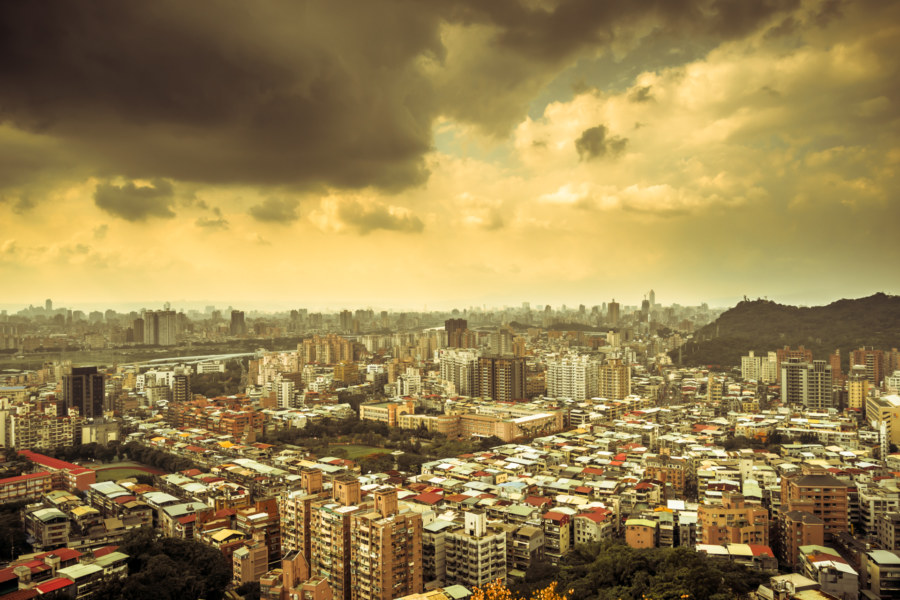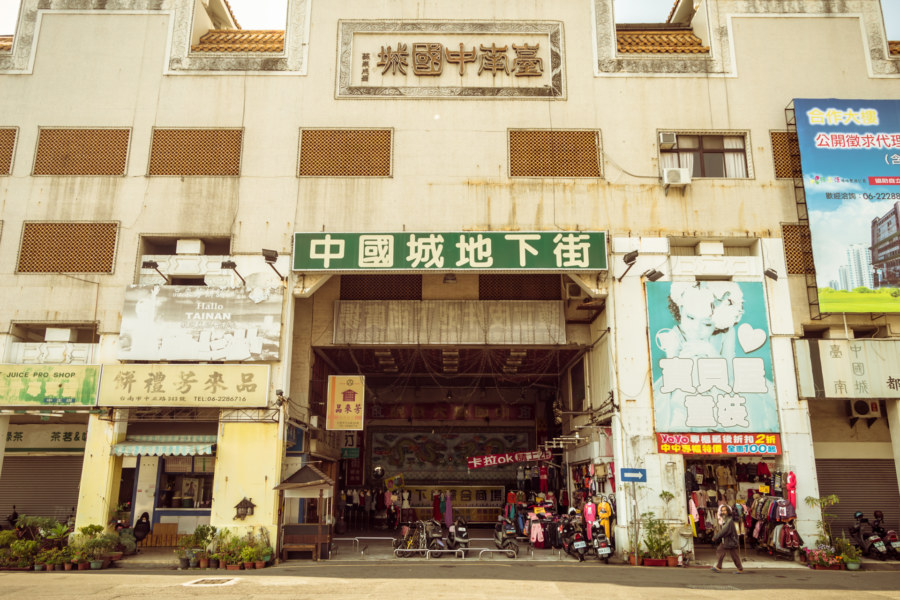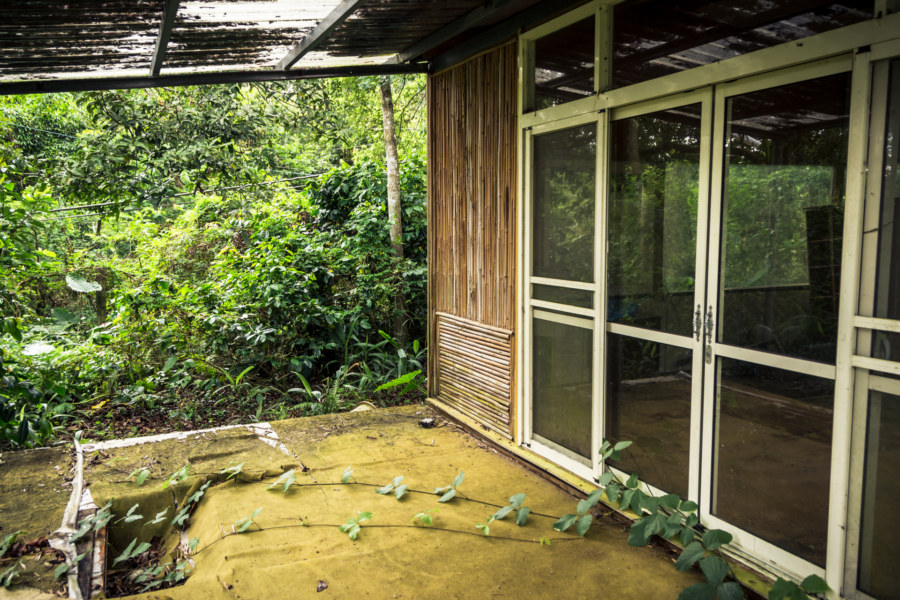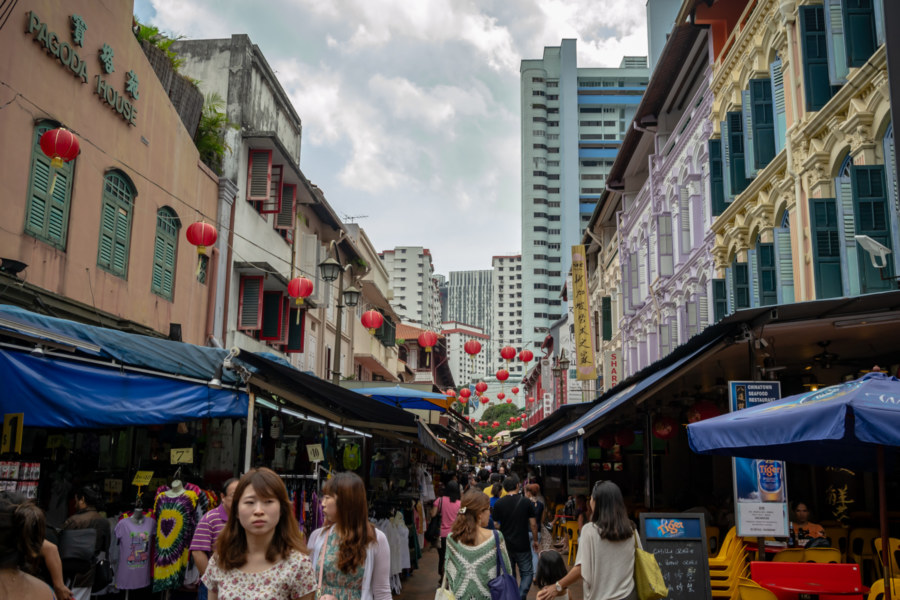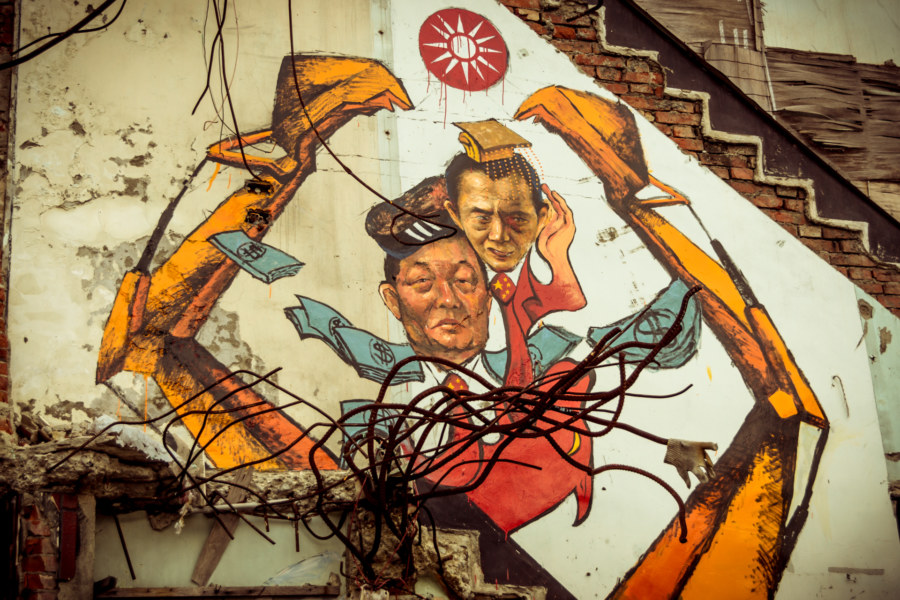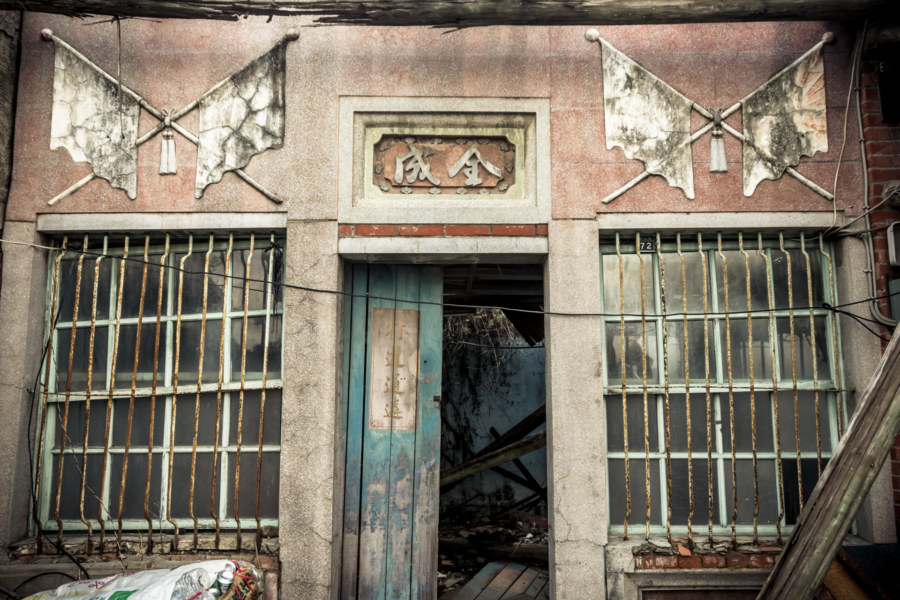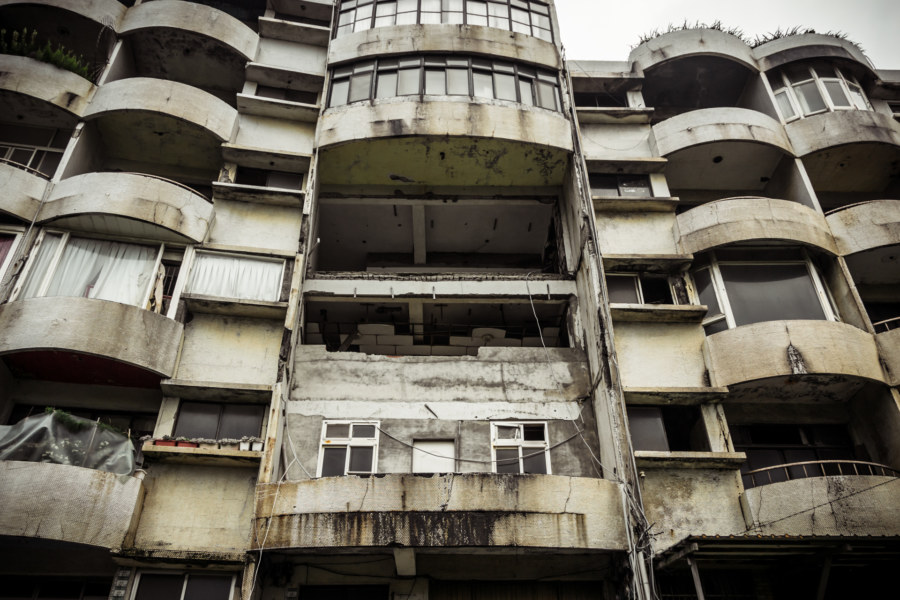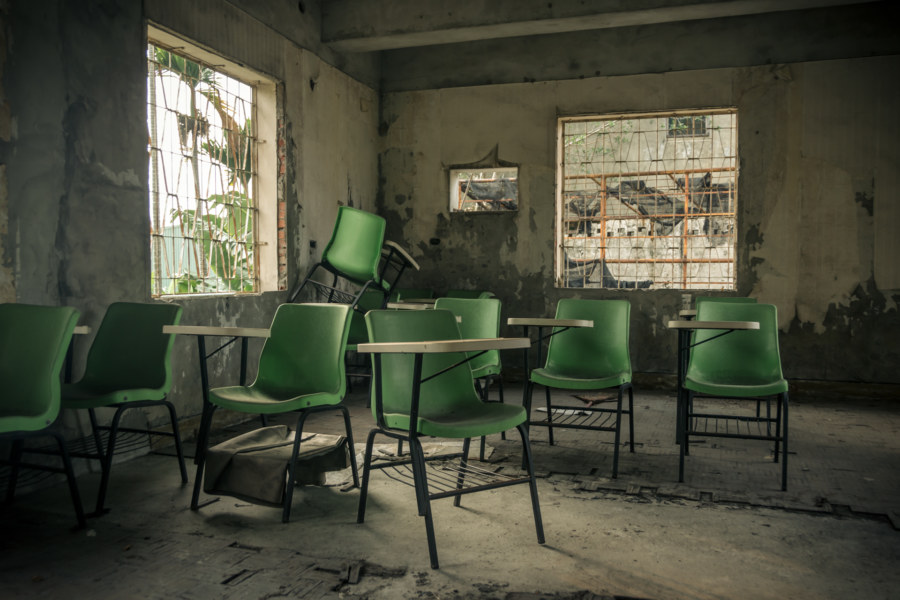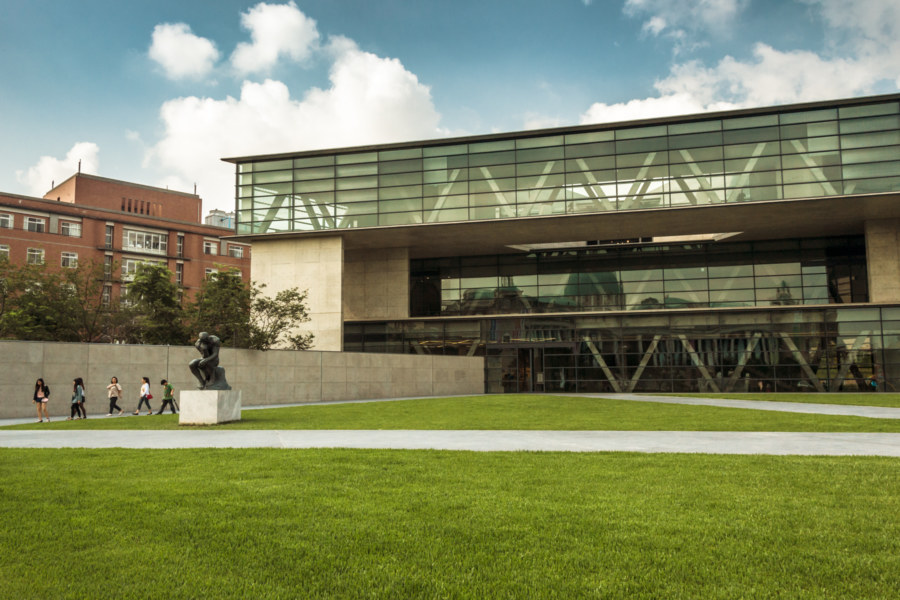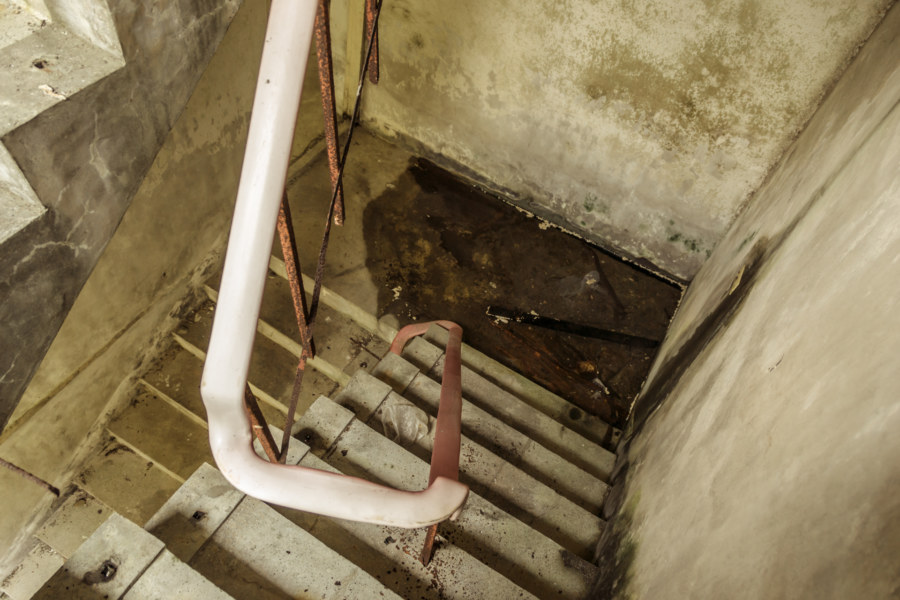Last year, near the end of 2013, I had the good fortune to move to Wenshan, the southernmost part of Taipei. In late September I was nearing the end of my first round-the-island bicycle tour and put a call out on Facebook asking if anyone knew of a place I could stay for a month or so. That call was answered—and I ended up staying with a couple of cool European guys for six months before heading south to Tainan in April 2014.
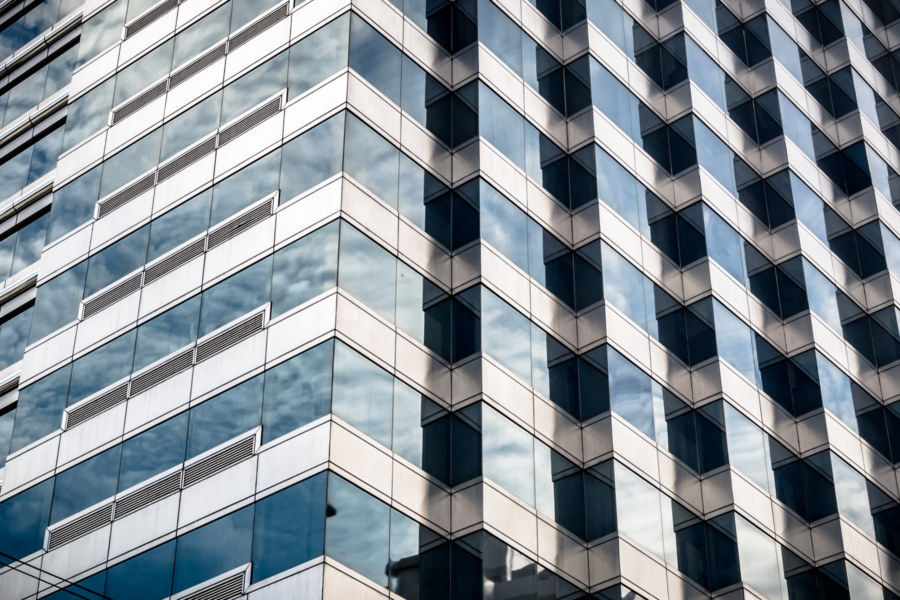
Structures fit for habitation and use. See also: urbanism, commercial, industrial, residential.
Subterms
Adjacent Terms
Tainan Chinatown 臺南中國城
Tainan Chinatown 臺南中國城 is a half-abandoned and soon to be demolished shopping mall and entertainment complex in Tainan City. Built in 1983, it was designed by C.Y. Lee, a famous architect who later directed the construction of 85 Sky Tower and Taipei 101. I went by to shoot a few photos with some friends one sunny afternoon in January 2014 so I figure I may as well share them here.
Vanilla Garden Minsu 香草園民宿
I was out riding a scooter from Changhua the hot springs resort town of Guanziling in rural Tainan when I noticed a rundown, seemingly abandoned building by the roadside in the mountains of Zhongpu, Chiayi. Stopping to investigate, I discovered a mínsù 民宿 (essentially a bed and breakfast) in the early stages of decay. Initially I had no luck finding out any information about this place but more recently I uncovered its formal name: Dòngzǐjiǎo Vanilla Garden Minsu 凍仔腳香草園民宿. Dongzijiao, apparently famous for its betel nut crop, is the name of the nearest village.
Postcards From Singapore
These photographs were captured on a short two day, three night visit to Singapore in February 2013. I was unable to do more than scratch the surface of this intriguing island city-state on such a brief trip, but I did manage to take a few interesting shots while I was there. Most of my time was spent in Singapore’s historic Chinatown, known in Chinese as Niúchēshuǐ 牛車水 (literally “ox-cart water”), but I also ventured into Little India and the Downtown Core.
The Seeds of Unrest
Part of a mural by Taiwanese artist Liu Tsungjung 劉宗榮 in Dapu village.
Last night I went to Dapu Village in Zhunan, the northernmost township in Miaoli, for a concert and movie screening commemorating the treacherous demolition of four homes last year. The event took place on the former site of Chang Pharmacy, whose owner, Chang Sen-wen (張森文), was later found dead in a drainage ditch in an apparent suicide. This occurred not long after the government razed his home and business to the ground with all his possessions still inside. In a cruel twist of fate the Chang family was served a bill for demolition equalling the financial compensation offered by the government—leaving them with absolutely nothing. Eminent domain may serve the public interest in special circumstances—but this was outright robbery by the state.
The Dapu incident1, in brief: Miaoli magistrate Liú Zhènghóng (劉政鴻, pictured above, at left) ordered the expropriation of 156 hectares of land in Dapu Village in 2009, ostensibly to build a new…
Gushan Village Old Homes 姑山里老屋
I was off the main road in Gūshān Village 姑山里 in Dashu, a hilly rural district in Kaohsiung, when I noticed a row of old buildings next to a small temple. Stopping to investigate, I unslung my camera and snapped a few shots, not quite realizing what I was looking at. My mind was elsewhere—a consequence of two hard days of riding in the tropical summer sun. I was, at the time, heading south to the railway line after making it to Qishan the night before and touring through Meinong earlier in the day. Only later, when I went to develop the photos, did I notice the faint traces of the Japanese rising sun flag in the top right corner of the building pictured above. At one point these stone flags must have been painted bright red, a reflection of Japanese imperial interests in Taiwan.
Harbour City 海灣新城
Harbour City 海灣新城 is an imposing ruin sprawling along the coastline not far from Cape Fugui 富貴角 at the northernmost tip of Taiwan. I first noticed it on my round-the-island bicycle tour last year but did not stop to explore, having already spent much of my daylight riding time poking around the UFO houses of Wanli.
More recently I set out on a two-day urban exploration road trip with a friend from the Netherlands. Late in the afternoon on the first day we were thrown out of an abandoned amusement park in nearby Jinshan. Not having anything better to do with the remaining hour or so of daylight, I suggested we make our way up the coast to Shimen to investigate the ruin I had seen the previous year.
Wufeng Minsheng Clinic 霧峰民生診所
On the way back from the 921 Earthquake Museum 九二一地震教育園區 in early 2014 I noticed an abandoned building at the side of the highway in rural Wufeng. Stopping to investigate, at first I assumed it must have once operated as a bǔxíbān 補習班, or cram school, a common feature of the social landscape here in Taiwan, but that initial hypothesis turned out to be completely wrong. Years later it was brought to my attention that this was originally Mínshēng Clinic 霧峰民生診所, the office of a country doctor by the name of Lín Péngfēi 林鵬飛. He passed away several years ago, leading to the abandonment of the clinic. More recently it was purchased by local farmers, completely renovated, and has reopened as a small museum and community center, the Wufeng Minsheng Story House 霧峰民生故事館.
Asia Museum of Modern Art 亞洲現代美術館
The Asia Museum of Modern Art 亞洲現代美術館 (official site in Chinese) is a strange thing to find amid the rural-industrial sprawl of southern Taichung. Located on the outskirts of historic Wufeng, it is part of the much larger Asia University 亞洲大學 campus, itself riddled with European-inspired architectural curiosities like a gymnasium designed to look like the Colosseum of Rome. The art gallery, straying from the kitsch theme of the rest of the university, is an original design by renowned Japanese architect Tadao Ando. It took nearly seven years to build and opened in 2013.
The Leaning Tower of Su’ao 蘇澳斜塔
There are plenty of crummy old apartment blocks in Taiwan, many of them abandoned and left to the elements. I seldom take more than a cursory look any more since they’re so easy to find—just ride or walk around and look for broken windows and grime. Most of the time there isn’t much to see inside—and anything valuable or interesting has almost always been removed. Even so, I stopped for a moment to investigate this particular building in Su’ao, a township in Yilan, and made an intriguing discovery.
